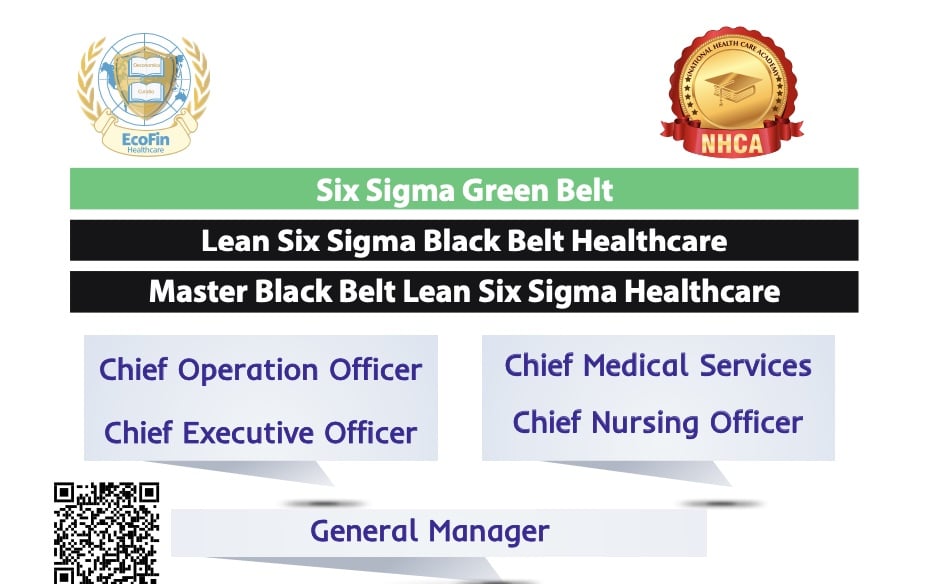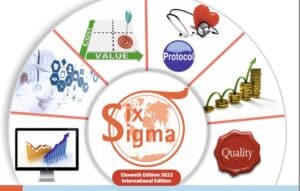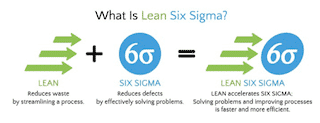Lean Six Sigma Green Belt (Healthcare specialisation)
Online 6 months accredited Advance Diploma
Accredited Advance Diploma in Lean Six Sigma Green belt (healthcare specialisation) prepares you for becoming successful middle and top Manager in hospital or pharmaceutical Company. You will learn sufficient case studies, examples, tools, performance improvement models relevant for healthcare and hospital settings. You will find these tools useful in your role as middle and top management in a hospital.
This accredited SSGB course is suitable for you if want to become General Manager, Operations Manager, Quality Control Manager, Quality Control Head.
NHCA Certificate is valid for all hospitals in India, US, Canada, Europe, Australia and Gulf.
Lean Six Sigma Green Belt Healthcare
6 months accredited advance diploma
Get Title
Lean Six Sigma Green Belt Professional specialised in healthcare


Fee is INR 45,000
Get payment receipt and confirmation of seat by email instantly. Fee includes everything. No hidden charge.
Relation manager will contact you within few hours and will send you Whatsapp and calling number of your mentor.
-
Accredited Lean Six Sigma Green Belt Healthcare
6 months Advance Diploma - Get Title Lean Six Sigma Green Belt Professional specialised in Healthcare
- Book delivered to your home. Included in fee.
- Online zoom live classes plus lifetime recordings
- Online MCQ pattern exam from home
- Completely online
- Self study of 4 hour per week. Books are easy & interesting
- Learn case studies and tools for healthcare
- NHCA certificate is accepted in India, USA, Canada, Gulf, Asia & Europe.
- Lifetime valid certificate. No need to pay for renewal
- NHCA certificate is valid for all hospitals and accreditation audits
- Fee for Green Belt is INR 45000 to be paid at time of admission. No instalment. Fee for Black Belt is INR 35000. Green belt from NHCA is required to be eligible for Black Belt.

Why people choose NHCA
| Why you will prefer NHCA | NHCA | Local |
|---|---|---|
| Knowledge partner | NHCA has partnered with 250 hospitals, schools & NGOs. Videos testimonials & career journey of studenets | |
| Title on certificate | Accredited Diploma of Completion. NHCA certificate complies with audit requirements of hospitals, NGOs, schools. | Certificate of Participation |
| Hidden charges | Fee includes everything. No hidden charge. | Additional registration, exam & certificate fee |
| Lifetime valid certificate | No renewal charge | Renewal charge |
| Copyright original Hard copy books and certificate | Delivered to home, included in fee | Soft copy or Not original |
| Why choose NHCA | NHCA certificate is accepted by all hospitals, NGOs, schools in India. Watch success stories | Some 'friends' refer you to earn referral fee |
| Eligibility | Relevant Graduate | 12th pass. You don't want to study with lesser qualified. |
| Mentor & Training Manager | Whatsapp & Call, you talk to a practitioner | Email or you talk to a sales person |
| Training Sessions | Online Zoom Class + Recordings + Copyright content | Recordings |
| Fee | No instalment, no discount, no hidden charge. No one will run behind you for admission. After admission you will be in touch with a practitioner for realistic career guidance. | Sales person will call you multiple times, give you 'scholarship' and instalment, with over promises. |
Single Book. Interesting to read. Covers all top management tools with healthcare case studies and examples. Includes practical approach to help you perform as Leader and Manager more effectively. We will not bore you with more than 5 page unnecessary statistics. You don’t want to become a statistician.
Syllabus focuses on quality, compliance, protocols, finding problems and solutions. You will learn practically useful six sigma and management tools in hospital with real life examples like
- how to reduce turn around time of OT, ICU
- how to reduce waiting time in OPD and diagnostics
- concept to convert cost centre to profit centre
- models of performance improvements
- how to find reasons for gaps in services
- how to improve customer satisfaction
- All examples and case studies are for healthcare only.
For detail about healthcare six sigma and concepts covered in syllabus click here.
- Top Management Tools
- Models for Process Improvement
- Models for Performance Improvement
- All examples and tools relevant for healthcare
- Examples of projects related to hospital
- Case Studies for process improvement
- Self Improvement Exercises for each model
Concept of Lean & Six Sigma
- Benefits of Lean Six Sigma
- How Does Lean Six Sigma Work?
- Reducing defects in hospital services
- Improving performance and profit of hospital
- Features and key concepts of Six Sigma
- Six Sigma Training Levels: Yellow, Green and Black Belt
- How to Run Six Sigma Project: Step wise and team formation
- Common Terms in Six Sigma & Definitions
- Accounting, Economic & Opportunity Cost and ROI
- Converting Cost Centre into Profit Centre
- Six Sigma Methodology: DMAIC, DMADV, DFSS
- DMAIC in detailed
- Defect Metrics
- Six Sigma Level and Accuracy
Statistics
- Types of Data
- Six Steps of Data Collection
- Methods of Data Collection
- Type of Statistical tests
- Sampling methods
- Mean, Median, Mode and Range
- Normal Distribution Curve
- Six Sigma: Statistically Visualised
- 4 DPMO Statistically Visualised
Models for Process Improvement
- Kaizen or Shewhart cycle, Deming cycle, or PDCA Model
- Kaizen Blitz
- PDSA Cycle or Rapid Cycle Improvement (RCI) Model
- Rapid Cycle Improvement Project
- Focus PDCA Model
- FADE model
- 5S Model
- Muda Muri Mura
- Lean Model
Top Management Tools
Tool #1 The Critical to Quality (CTQ) Tree
Tool #2 The Flowcharts and Process Map
Tool #3 Workflow Diagram
Tool #4 The Histogram and Bar Chart
Tool #5 The Pie Chart
Tool #6 Line Chart
Tool #7 The Affinity Diagram
Tool #8 The Pareto Chart and Pareto’s Principle
Tool #9 The Cause-Effect Diagram or Ishikawa Fish Bone Diagram
Tool #10 Five Why Technique
Tool #11 The Scatter Diagram
Tool #12 The Run Chart
Tool #13 The Control Chart
Tool #14 The Process Summary Worksheet
Tool #15 The Gantt Chart
Tool #16 The PERT Chart
Tool #17 Decision Matrix or Prioritization Matrix
Tool #18 Force Field analysis
Tool # 19 Stakeholder analysis
Tool #20 The Planning Matrix
Tool #21 Quality Storyboard for Improvement Plan
Tools to Generate Ideas and Solutions
- Surveys
- Brainstorming
- Multi-Voting
- Nominal Group Technique
- Creative problem-solving
- Delphi Method
- Group Decision Making
- Affinity Diagrams

Management Courses
Six Sigma Healthcare Concepts
What is Lean Six Sigma
Lean and Six Sigma complement each other. Lean accelerates Six Sigma, delivering greater results than what would typically be achieved by Lean or Six Sigma individually.
Lean is reducing waste by streamlining a process. Six Sigma is reducing defects in service or product by effectively solving problems.
Combining these two methods gives your improvement team a comprehensive tool set to increase the speed and effectiveness of any process within your organization – resulting in increased revenue, reduced costs and improved collaboration.

NHCA is the only academy which provides Six Sigma and Lean Six Sigma in Healthcare
Six Sigma is of 3 types
-
Healthcare
-
Information Technology
-
Manufacturing
Healthcare
Six Sigma helps increase the quality of time health care providers are able to spend with patients, reduce the time spent on paperwork, increase customer satisfaction, reduce wastage and defects in service, save costs without compromising on healthcare quality and protocols. NHCA is world’s eminent training and certification provider and only academy which provides Six Sigma and Lean Six Sigma in Healthcare. The syllabus of Six Sigma includes management tools, improvement models, process improvement tools and examples relevant for healthcare.
Information Technology
As consumers increasingly rely on technology, Lean Six Sigma helps businesses by delivering products with fewer defects, decreasing returns and increasing customer satisfaction.
Manufacturing
Budgets continue to tighten and resources are more limited than usual. Lean Six Sigma shortens the manufacturing time, reduces defects and wastage, increases customer satisfaction.
Benefits of Six Sigma in Hospital
Organizations face rising costs and increasing competition every day. Lean Six Sigma allows you to combat these problems and grow their businesses the following ways:
- Lean Six Sigma increases your organization’s revenue by streamlining processes.
- Lean Six Sigma decreases your organization’s costs
- Lean Six Sigma improves the efficiency of your organization
- Lean Six Sigma develops effective employees within your organization
DMAIC Methodology of Six Sigma in Hospital
Six Sigma is simply an effective methodology used to fix a problem. It is based on systematic approach and is completed in five phases:
- Define: Define the problem and what is required to satisfy your customer
- Measure: Map the current process to collect data
- Analyze: Investigate and identify what causes the problem
- Improve: Implement a fix that will solve the problem
- Control: Sustain the improved results
Simply put, Six Sigma helps you identify the cause of a problem and implement a fix based on facts, rather than assumptions. This produces improved results and success that you and your team, managers and organization can be proud of.
Features of Healthcare Six Sigma
- Six Sigma’s aim is to eliminate waste and inefficiency, thereby increasing customer satisfaction by delivering what the customer is expecting.
- Six Sigma follows a structured methodology, and has defined roles for the participants.
- Six Sigma is a data driven methodology, and requires accurate data collection for the processes being analyzed.
- Six Sigma is about putting results on Financial Statements.
- Six Sigma is a business-driven, multi-dimensional structured approach for
- Improving Processes
- Lowering Defects
- Reducing process variability
- Reducing costs
- Increasing customer satisfaction
- Increased profits
Myths about Six Sigma
Benefits of Six Sigma
- · Generates sustained success
- · Sets a performance goal for everyone
- · Enhances value to customers
- · Accelerates the rate of improvement
- · Promotes learning and cross-pollination
- · Executes strategic change


